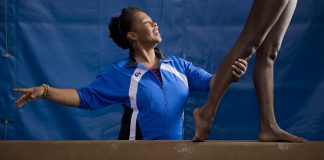As you step off the cab and into the French Quarter, the afternoon’s warm and humid, New Orleans bayou breeze brings hints of chicory coffee to your nostrils.
Inside Café Du Monde you order a café au lait and sugary beignet, savoring every sip and bite as the Lady of New Orleans, sitting on her permanent fountain throne, watches you enjoy such simple pleasures.
As you leave the café and make your way past Jackson Square, the constant sounds of jazz go with you as you head towards Bourbon Street—ready to cut loose.
And while it may sound enjoyable, this is New Orleans circa 1965.
After 250 years of a “white” way of life—highlighted with institutionalized Jim Crow laws after the 1896 U.S. Supreme Court ruling in Plessy v. Ferguson (separate but equal), this city, along with much of the U.S. south, was not prepared or willing to do away with racial discrimination and segregation…even after the Civil Rights Act of 1964 outlawed such abhorrent policies and behavior.
Louisiana’s policies were so vile, in fact, that it was the scene of the first large-scale bus boycott by African-American activists, led by Rev. T.J. Jemison out in Baton Rouge 1953.
The action would inspire Dr. Martin Luther King to meet with Jemison two years later, about tactics used in Baton Rouge, and apply those strategies when planning the bus boycott that ultimately defeated segregation in Montgomery, Alabama.
You might be asking: “What does this have to do with sports?” Everything.
Before former San Francisco 49ers quarterback Colin Kaepernick took a knee to protest racism and police brutality in 2016, there was Buffalo Bills fullback Cookie Gilchrist, who took a stand and led the charge against racism in 1965 as a star in the American Football League (AFL).
“People think I’m an oddball because I’m a Negro who speak up. But I have a lot on my mind. It’s an internal disease, and it’ll eat me alive if I don’t get it out of my system what I think about things,” said Gilchrist in a 1964 Sports Illustrated interview.
New Orleans 1965: Home of the AFL All-Star Game
As the 21 Black players exited the airport Jan. 9, 1965, 24-hours before they hit the field in the All-Star Game, trouble was already making its way towards them.
“The white players were going out, getting in cabs, and taking off, going to the hotels,” said Kansas City Chiefs linebacker Bobby Bell.
Each time Black players approached a cab driver, they would say “no can do” and drive off.
After several hours, a sky cab employee finally explained to Black players they needed to “get the right cab, because you’re colored…they won’t pick you up…it’s a little different here. If you’re colored, you just can’t ride in any cab.”
Such a cold welcome for Black players went against all the assurances given to them by organizers of the All-Star Game—there was no welcome mat in sight.
“I don’t care what color the taxi is. I just want to get to my hotel,” said a witty Gilchrist.
Eventually, all 21 were able to make it to their hotels—AFL West at the Roosevelt Hotel and AFL East a few miles away at the Fontainebleau motel, and got ready to hit the French Quarter with their teammates.
That evening showed players the true Southern “way of life.”
First, there were the restaurants.
“I went to hang my coat up on the hanger, and this white couple said: ‘Don’t put your coat next to ours, put it over there somewhere,’ ” recalled Buffalo Bills tight end Ernie Warlick.
White diners would go out of their way to toss Black players’ coats to the floor—worried about black garments co-mingling with white ones.
Then came the clubs.
As the soulful sounds of James Brown hit their ears, players were excited to finally find a Black club that would welcome them.
“We got to the doorway—they had doorkeepers at all of the clubs down there—and the guy said: ‘Y’all can’t come in here.’ My friend Earl Faison saw the gun, but I didn’t see it at the time,” said San Diego cornerback Dick Westmoreland. What followed was an ugly situation.
After some back and forth, players rabble-roused by asking why Black music was playing if they hated Blacks so much. The little, unnerved bouncer—not used to staring up at huge, Black football gladiators, whipped out his pistol, cocked the hammer and threatened to start shooting.
As the scene unfolded, over 200 onlookers appeared. Unsure of which way things would go, the players began their walk back to the hotel. Cabs refused to pick them up.
As word spread of the evening’s incident and the blatant racism found everywhere, the organizing call went out.
“Cookie called me the next morning and said, ‘All the guys ran into some discrimination,’” said Warlick. “We’re having a meeting. We need to decide whether we’re going to play.’”
At 6-foot-3, 251-pounds, Gilchrist was a gridiron powerhouse and natural leader. Gilchrist spent six years in the Canadian Football League (CFL), where he was regarded as one of its top two-way players before signing with the Bills in 1962.
Inside room 990—Gilchrist’s room—the players chatted over what to do. The mood was nowhere near militant, and their white teammates had no idea what was going on. They had gotten on the morning buses for practice.
“The bus was like a third empty,” said Ron Mix, a white San Diego tackle. “And the coach said, ‘Where is everybody?’ Somebody said, ‘None of the Black players are here. They’re all in a meeting.’”
After Mix went up to talk with his Black teammates, Raiders wide receiver Art Powell put it all on the table: “Look, we know we aren’t going to change these people…But neither are they going to change us. We must act as our conscience dictates.”
With an all-star football game on the line and Black players committed to sitting out in protest, city officials and promoters panicked and sent in a mediator to, hopefully, resolve the boycott issue.
“I met with the players and asked them not to leave immediately, but to give us 24 hours to see if the matter could be worked out to the satisfaction of the entire community,” said Ernest Morial, National Association for the Advancement of Colored People (NAACP) field secretary. “In the final analysis, it was their decision.”
After a 16-3 vote, the boycott was on with Gilchrist, Daniels and Powell leading the charge. But it wasn’t just Black players who decided to sit out. Their white teammates, in an act of solidarity, refused to play too.
“I made a decision then that if the game were to go on despite the absence of the Black players, I would not play,” reflected Mix. “I felt I would be wrong in not playing but that it was important for at least one white player to join them, to say we’re with you.”
New Orleans: Pro Grid Nightmare
That was the Associated Press headline following the news of the boycott. It was followed by “Protest by Negro Gridders Cancels N.O. All-Star Game” in the Times-Picayune.
The players had taken an unprecedented stand against injustice and the public was not ready for it.
“Negroes have done themselves and their race a disservice. Not to mention the almost irreparable harm they inflicted on the future of professional football in New Orleans,” said New Orleans Mayor Victor Schiro.
Most Black players were back at the airport ready to head home mere hours after their boycott began.
After much back and forth discussion behind the scenes, AFL commissioner Joe Foss announced Monday, Jan. 11, 1965, the game would be moved to Houston, Texas, at the Jeppesen Stadium.
“Dixon [Dave Dixon, the head of the group sponsoring and promoting the All-Star Game] assured me that New Orleans was ready in all aspects for a game between racially mixed teams. Evidently, it isn’t,” said Foss. “They contacted as many businessmen as possible and got them to agree to treat the Negro players well. But they just couldn’t get to everyone. Negro players run into problems in nearly every city. But I guess what went on in New Orleans was more than they could be expected to take. I can’t say that I blame them.”
Houston was a more tolerant and welcoming city for the Black AFL players, and that following Saturday, East and West teams kicked off before a small crowd of 15,446 fans.
The AFL West beat the East, 38-14.
Dixon had a lot to say about the boycott back then—similar to certain modern-day fans when it comes to the “take a knee movement.”
The players’ “militant action…would not only damage the city but would greatly retard efforts by men of good will of both races to achieve harmony,” said Dixon.
Gee…I wonder where we have heard that before?
Add “sons of bitches” before it, and we’re at Trump rally.
Direct Action Works
The ability to stand against injustice, to protest publicly, and to organize for real political change is part of America’s radical democratic history—a history we should be proud of.
The 21 Black players’ gumption and morality forced an all-star game to move, and shined a spotlight on New Orleans and Louisiana’s racist practices, making it harder to sweep injustice under the rug, as it had been done before.
The fight for basic civil and human rights that took place in the ’60s brought together athletes, politicians, union members, and students. And it is no different from today’s fight against police brutality, racism, and alt-right policies which unites the same crowd.
“I am not going to stand up to show pride in a flag for a country that oppresses Black people and people of color,” explained Kaepernick in 2016. To me, this is bigger than football, and it would be selfish on my part to look the other way. There are bodies in the street and people getting paid leave and getting away with murder.”
No different than Ernie Ladd reflecting back at the direct action they took in ‘65 and saying: “Someone had to take a stand and stop players from being treated as second-class citizens…We didn’t do it for publicity. We did it because of what was right and what was wrong.”
So, was taking a stand and risking it all worth it in ’65? Yes. “Leading that boycott was better than anything I did playing football,” Gilchrist said years later.
Final Thought
We look at history to learn from our mistakes and chart a new course forward. What does it say about us as a nation when 53 years later, Black athletes and Black Americans are still fighting for basic civil and human rights, alongside other marginalized communities under political attack today?

















[…] What the ’65 Boycott Can Teach Us About Kaepernick […]